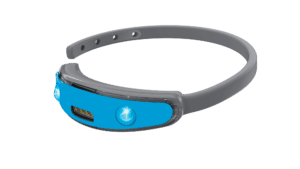Share this Post
Drowning is the top killer for children under the age of 5, and those statistics haven’t budged for decades.
Looking into the eyes of another devastated mom, Dr. Graham Snyder often has to deliver the heartbreaking news as a pediatric emergency room physician. A child was right there swimming, splashing, playing; then, they weren’t.
When Snyder and his colleague, Dr. Courtney Mann, realized we’re still using the same methods to prevent drowning that we did in the 14th century, they asked a simple question: Was there a way to incorporate technology to keep kids safe?
A local camp provided insight.

SEAL SwimSafe
Snyder noticed that kids at the YMCA wore necklace swimming bands, used to help both the lifeguards and swimmers know the swimmer’s restrictions based on the band color. Black is for the most advanced swimmers.
“If they are already wearing swimming bands, can we build a smarter band? One that knows when a child has been submerged too long? One that allows kids to do what they want to do—splash, dive, be at the bottom of the pool—but can tell when a child is not having fun anymore?” Snyder wondered.
Snyder and Mann developed the SEAL SwimSafe system, which will be used by North Carolina YMCAs this summer, says A.E. Finley YMCA’s aquatics director, Jeff Little.
It’s a neck band the swimmer wears that contains a radio transmitter that can detect how long the device has been submerged underwater. If under too long, an alarm sounds and a light from the band itself begins to flash.
The band is attached to a hub on the pool deck that also sets off an alarm to let you know that someone is in trouble.
If a child slips underwater, not only will an alarm sound alerting the entire pool that someone is submerged, but the light flashing will lead to a rescue seconds later, as opposed to minutes—the difference between life and death.
“SEAL SwimSafe bands will add an extra layer of safety for our swimmers,” says Little. “If all of our testing matches what we have seen so far, we hope to add this extra layer of protection and awareness to all of our swim programs.”
Share this Post




